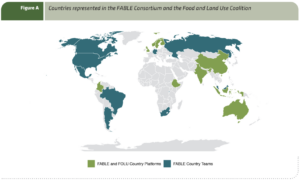Traditionally, analysis of the costs of cutting greenhouse gas emissions has assumed that governments would implement idealized, optimal policies such as uniform economy-wide carbon taxes. Yet actual policies in the real world, especially in large federal governments, are often highly heterogeneous and vary in political support and administrative capabilities within a country. While the benefits of heterogeneous action have been discussed widely for experimentation and leadership, little is known about its costs. Focusing on the United States, we represent plausible variation (by more than a factor of 3) in the stringency of state-led climate policy in a process-based integrated assessment model (GCAM-USA).





